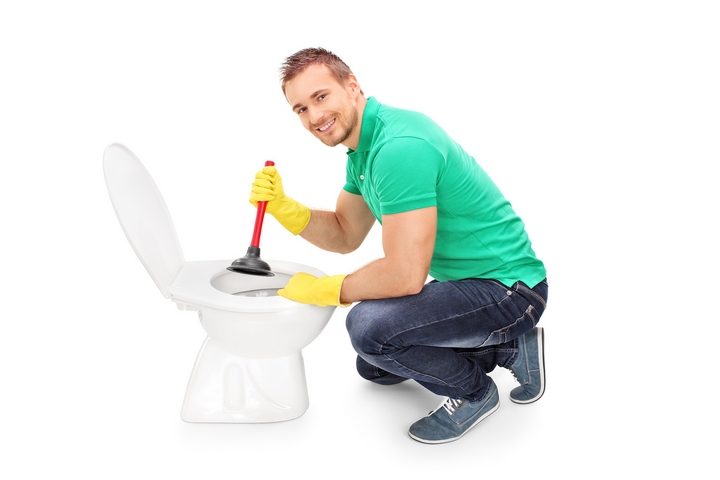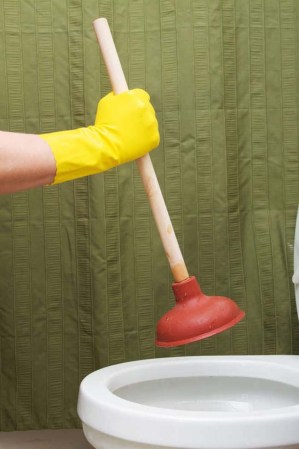Utilizing Plungers and Drain Cleaner: Expert Strategies
Utilizing Plungers and Drain Cleaner: Expert Strategies
Blog Article
What are your opinions with regards to How to Unclog Your Sink with a Plunger?

Intro
Correct maintenance of home drains pipes is vital for protecting against clogs and ensuring smooth water flow. One of the key devices in every house owner's toolkit is the bettor, along with different drain cleaners created to deal with persistent clogs efficiently. This short article checks out exactly how to utilize bettors and drainpipe cleaners efficiently to keep your drains pipes flowing freely.
Section 1: Understanding Bettors
Sorts of Plungers
There are numerous types of bettors readily available, each made for different sorts of drains pipes and obstructs. One of the most common types include cup bettors, flange bettors, and accordion plungers.
How Plungers Job
Bettors deal with the concept of creating stress and suction to dislodge obstructions. When effectively applied over a drain, they produce a vacuum that can pull out debris or break up blockages.
Picking the Right Plunger
Selecting the appropriate plunger depends on the kind of drainpipe and the nature of the clog. Mug bettors are optimal for sinks and bathtubs, while flange bettors are much better matched for bathrooms because of their design.
Common Blunders with Bettors
Staying clear of these blunders ensures effective plunging: improper seal around the drainpipe, inadequate pressure, and not clearing surrounding particles.
Section 2: Using Plungers Effectively
Prep work
Prior to diving, guarantee the bettor covers the drain entirely and forms a tight seal. Clear any kind of noticeable debris around the drainpipe opening.
Technique
Beginning with mild plunging movements to construct suction. Increase pressure progressively, utilizing a consistent rhythm. Repeat as necessary up until the drainpipe clears.
Fixing Tips
If diving does not function, try changing the seal, using oil jelly for a much better seal, or using a various sort of plunger.
Section 3: Comprehending Drainpipe Cleaners
Sorts Of Drainpipe Cleaning Company
Drain pipes cleaners can be chemical or chemical. Chemical cleansers utilize strong chemicals to dissolve obstructions, while enzymatic cleansers use all-natural enzymes to break down raw material.
Just How Drainpipe Cleaning Company Job
Chemical cleansers respond with clogs to liquify them, while chemical cleansers break down organic materials like hair and oil without hurting pipes.
Security Considerations
Always use handwear covers and eye defense when making use of chemical drain cleansers. Ensure ample air flow and follow maker guidelines very carefully.
Eco-Friendly Alternatives
Consider utilizing vinegar and cooking soft drink or enzyme-based cleaners for environmentally friendly options that are more secure for pipelines and the environment.
Area 4: Utilizing Drain Cleaners Successfully
Application Strategies
Put chemical cleaners directly into the drain opening. Allow them to help the advised time before purging with warm water. Enzymatic cleansers need to rest over night.
Preventative measures
Stay clear of mixing various sorts of cleansers, as this can create toxic fumes. Never use chemical cleaners combined with a plunger, as spilling can happen.
Managing Stubborn Blockages
For consistent clogs, think about making use of a pipes snake or calling a specialist plumber to stop damage to pipes.
Verdict
To conclude, recognizing exactly how to use plungers and drain cleaners successfully is important for keeping healthy and balanced pipes systems. By selecting the right devices and strategies, homeowners can tackle small obstructions and avoid significant pipes issues down the line.
How To Properly Use A Plumbing Snake To Clear Drains
When any drain clogs in our home arise, we tend to gravitate toward the plunger and little else. In cases where the plunger and its vacuum-created pressure are not able to clear clogs, many immediately move to harmful chemicals or simply call their plumber to fix the issue.
we’re happy to help with all drain cleaning needs and concerns. This includes informing you on a few other home remedies you may have at your disposal for minor to moderate clogs, one of which is the use of a plumbing snake. Many people have never used one of these before – let’s go over the steps to take when your drain clogs and you have a plumbing snake available.
Attempt Plunger Use
The first step here, as we noted above, should indeed be to grab your plunger when you notice a drain clog and attempt to resolve it this way. If you’re unsure how to use a particular type of plunger, our plumbers can answer any questions you have. If this doesn’t do the trick, however, you move on to the snake.
Locate And Prepare Snake
A plumbing snake is a metal or plastic device that’s generally about a quarter of an inch thick. It’s design with significant extensions, meant to reach down into your clogged drain and push the clog out. Snakes also contain drain augers that will latch onto and push stubborn blockages.
If your plunger doesn’t clear a clog, locate your snake and bring it to the drain in question. We also recommend keeping a bucket nearby to collect the clog once you pull it out, plus we’d advise wearing goggles and possibly protective gloves.
Feed Snake
Once you’re ready to go, feed the snake slowly down the drain, using the crank device it comes with to keep it moving until it finds the clog. Once this happens, much of the clog will be latched onto the coil so you can pull it out, while the rest will simply break up and flow downward.
Detach Debris
Remove the snake slowly from the drain, and once you’ve done so, pick off any debris that’s stuck to the coil. This is another area where wearing gloves is a must.
Flush Drain
Finally, take a few minutes to ensure the snake has done its job correctly. If you’ve been using it on a toilet, flush the toilet a couple times and make sure everything flows well. If you’ve used it on a different drain, flush it with some room temperature water.
https://www.mybuddytheplumber.com/blog/how-to-properly-use-a-plumbing-snake-to-clear-drains/

Application Strategies
Put chemical cleaners directly into the drain opening. Allow them to help the advised time before purging with warm water. Enzymatic cleansers need to rest over night.
Preventative measures
Stay clear of mixing various sorts of cleansers, as this can create toxic fumes. Never use chemical cleaners combined with a plunger, as spilling can happen.
Managing Stubborn Blockages
For consistent clogs, think about making use of a pipes snake or calling a specialist plumber to stop damage to pipes.
Verdict
To conclude, recognizing exactly how to use plungers and drain cleaners successfully is important for keeping healthy and balanced pipes systems. By selecting the right devices and strategies, homeowners can tackle small obstructions and avoid significant pipes issues down the line.
How To Properly Use A Plumbing Snake To Clear Drains
When any drain clogs in our home arise, we tend to gravitate toward the plunger and little else. In cases where the plunger and its vacuum-created pressure are not able to clear clogs, many immediately move to harmful chemicals or simply call their plumber to fix the issue.
we’re happy to help with all drain cleaning needs and concerns. This includes informing you on a few other home remedies you may have at your disposal for minor to moderate clogs, one of which is the use of a plumbing snake. Many people have never used one of these before – let’s go over the steps to take when your drain clogs and you have a plumbing snake available.
Attempt Plunger Use
The first step here, as we noted above, should indeed be to grab your plunger when you notice a drain clog and attempt to resolve it this way. If you’re unsure how to use a particular type of plunger, our plumbers can answer any questions you have. If this doesn’t do the trick, however, you move on to the snake.
Locate And Prepare Snake
A plumbing snake is a metal or plastic device that’s generally about a quarter of an inch thick. It’s design with significant extensions, meant to reach down into your clogged drain and push the clog out. Snakes also contain drain augers that will latch onto and push stubborn blockages.
If your plunger doesn’t clear a clog, locate your snake and bring it to the drain in question. We also recommend keeping a bucket nearby to collect the clog once you pull it out, plus we’d advise wearing goggles and possibly protective gloves.
Feed Snake
Once you’re ready to go, feed the snake slowly down the drain, using the crank device it comes with to keep it moving until it finds the clog. Once this happens, much of the clog will be latched onto the coil so you can pull it out, while the rest will simply break up and flow downward.
Detach Debris
Remove the snake slowly from the drain, and once you’ve done so, pick off any debris that’s stuck to the coil. This is another area where wearing gloves is a must.
Flush Drain
Finally, take a few minutes to ensure the snake has done its job correctly. If you’ve been using it on a toilet, flush the toilet a couple times and make sure everything flows well. If you’ve used it on a different drain, flush it with some room temperature water.
https://www.mybuddytheplumber.com/blog/how-to-properly-use-a-plumbing-snake-to-clear-drains/

Do you like reading up on How to Use a Plunger to Unclog a Toilet or Drain? Try to leave a short review down below. We'd be glad to hear your reactions about this content. Hoping to see you back again later on. Enjoyed our blog entry? Please share it. Let somebody else find it. Thank-you for taking the time to read it.
Schedule Service Pickup Report this page